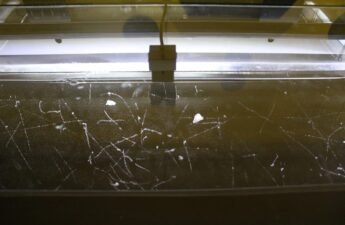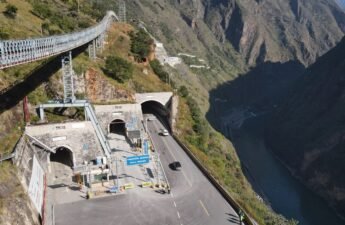2 billion years ago, occurred a nuclear fission in the Oklo uranium deposit, current Gabon, Central Africa. It’s the only natural nuclear reactor discovered so far.
How the natural nuclear reactor was discovered?
Uranium is found in three forms:
- U-234: the rarest isotope.
- U-235: the fissile uranium, that makes nuclear fission.
- U-238: the most abundant.
In May 1972, workers from Pierrelatte uranium enrichment plant made measures of uranium quantity in Oklo mine. When the content was measured, it was expected that the U-235 amount corresponding to 0.720%. However, the percentage found was 0.717%. 200 kg of U-235 was missing. How to explain this difference?

To have nuclear fission, uranium deposit must have at least 3% of U-235. U-235’s half-life is 700 million years, while U-238’s half-life is 4.5 billion years. If today the fissile uranium amount is 0.72%, 2 billion years ago the content must be 3.67%, enough for nuclear fission.

Evidences of fission
Have the right amount of isotope isn’t enough to sustain the hypothesis of natural nuclear reactor. Other pieces of evidence which must be found are:
- Ruthenium-99: Naturally, this isotope corresponds to 12.7% of total ruthenium in a reserve. With nuclear fission, this percentage is between 27% and 30%.
- U-235/U-238 rate must be lower than normal.
- Xenon isotopes, as Xe-144 and Xe-135.
- Neodymium-143: To indicate that there was fission, this isotope content on neodymium must be higher than 12%.


In the same year, the French physicist Francis Perrin discovered the 4 evidences previously cited in 17 sites in Oklo region.
Access the post about nuclear power plant operation for more information about fission reaction.
How a nuclear power plant works? Click here
How did it worked?
In addition to having a minimum quantity of 3% uranium-235, other requirements to a natural nuclear reactor work are:
- A neutron source to start chain reaction. When U-235 decays, thorium and neutrons are produced.
- High concentration of moderator material, to reduce neutron’s speed. In this case, was used water.
- Low concentration of neutron absorbers, like cadmium, boron, and lithium.
- Uranium ore’s length must be bigger than 2/3 of a meter, for the reaction to continue before the neutron leaves the deposit.

Fission’s heat evaporated the water, stopping chain reaction. Consequently, temperature cools down and water appears again, reinitiating nuclear reaction. This reactor worked for hundreds of thousands of years, generating an average power of 100 kW, some sources claim 25 kW. Have 40 km in length, but the environmental impact affected only 40 metros from the reactor in all directions.
This interesting discovery can give tips in how to manage better radioactive waste from nuclear power plants.



